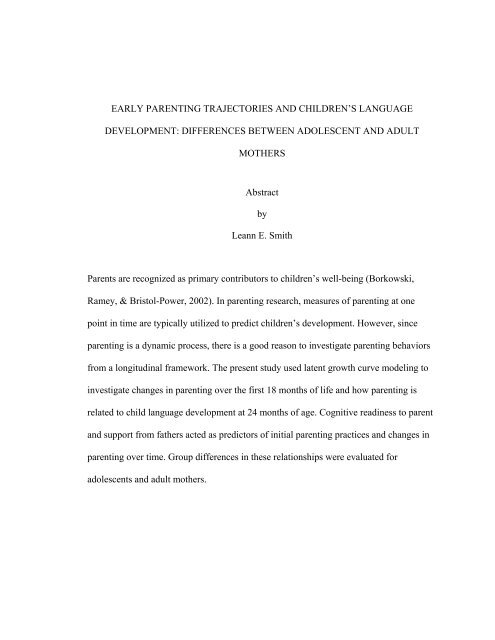DIFFERENCES BETWEEN ADOLESCENT AND ADULT MOTHERS ...
DIFFERENCES BETWEEN ADOLESCENT AND ADULT MOTHERS ...
DIFFERENCES BETWEEN ADOLESCENT AND ADULT MOTHERS ...
Create successful ePaper yourself
Turn your PDF publications into a flip-book with our unique Google optimized e-Paper software.
EARLY PARENTING TRAJECTORIES <strong>AND</strong> CHILDREN’S LANGUAGE<br />
DEVELOPMENT: <strong>DIFFERENCES</strong> <strong>BETWEEN</strong> <strong>ADOLESCENT</strong> <strong>AND</strong> <strong>ADULT</strong><br />
<strong>MOTHERS</strong><br />
Abstract<br />
by<br />
Leann E. Smith<br />
Parents are recognized as primary contributors to children’s well-being (Borkowski,<br />
Ramey, & Bristol-Power, 2002). In parenting research, measures of parenting at one<br />
point in time are typically utilized to predict children’s development. However, since<br />
parenting is a dynamic process, there is a good reason to investigate parenting behaviors<br />
from a longitudinal framework. The present study used latent growth curve modeling to<br />
investigate changes in parenting over the first 18 months of life and how parenting is<br />
related to child language development at 24 months of age. Cognitive readiness to parent<br />
and support from fathers acted as predictors of initial parenting practices and changes in<br />
parenting over time. Group differences in these relationships were evaluated for<br />
adolescents and adult mothers.
















